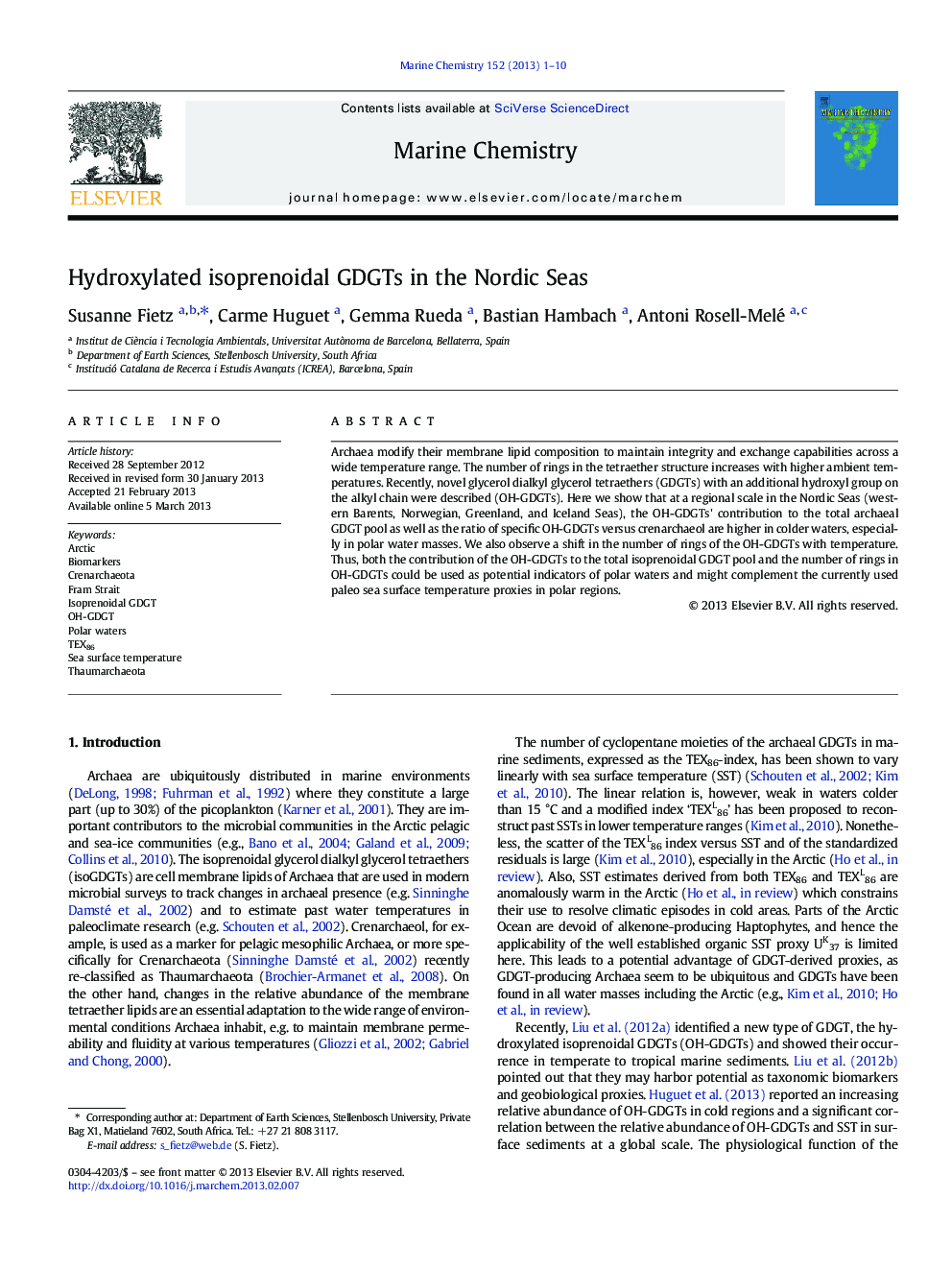| Article ID | Journal | Published Year | Pages | File Type |
|---|---|---|---|---|
| 1261427 | Marine Chemistry | 2013 | 10 Pages |
•OH-GDGTs are ubiquitous in the Nordic Seas.•Their relative abundance (% of total GDGTs) is highest in polar waters.•The number of cyclopentane rings in OH-GDGTs increases with temperature.•OH-GDGTs may complement paleothermometer proxies in polar regions.
Archaea modify their membrane lipid composition to maintain integrity and exchange capabilities across a wide temperature range. The number of rings in the tetraether structure increases with higher ambient temperatures. Recently, novel glycerol dialkyl glycerol tetraethers (GDGTs) with an additional hydroxyl group on the alkyl chain were described (OH-GDGTs). Here we show that at a regional scale in the Nordic Seas (western Barents, Norwegian, Greenland, and Iceland Seas), the OH-GDGTs' contribution to the total archaeal GDGT pool as well as the ratio of specific OH-GDGTs versus crenarchaeol are higher in colder waters, especially in polar water masses. We also observe a shift in the number of rings of the OH-GDGTs with temperature. Thus, both the contribution of the OH-GDGTs to the total isoprenoidal GDGT pool and the number of rings in OH-GDGTs could be used as potential indicators of polar waters and might complement the currently used paleo sea surface temperature proxies in polar regions.
